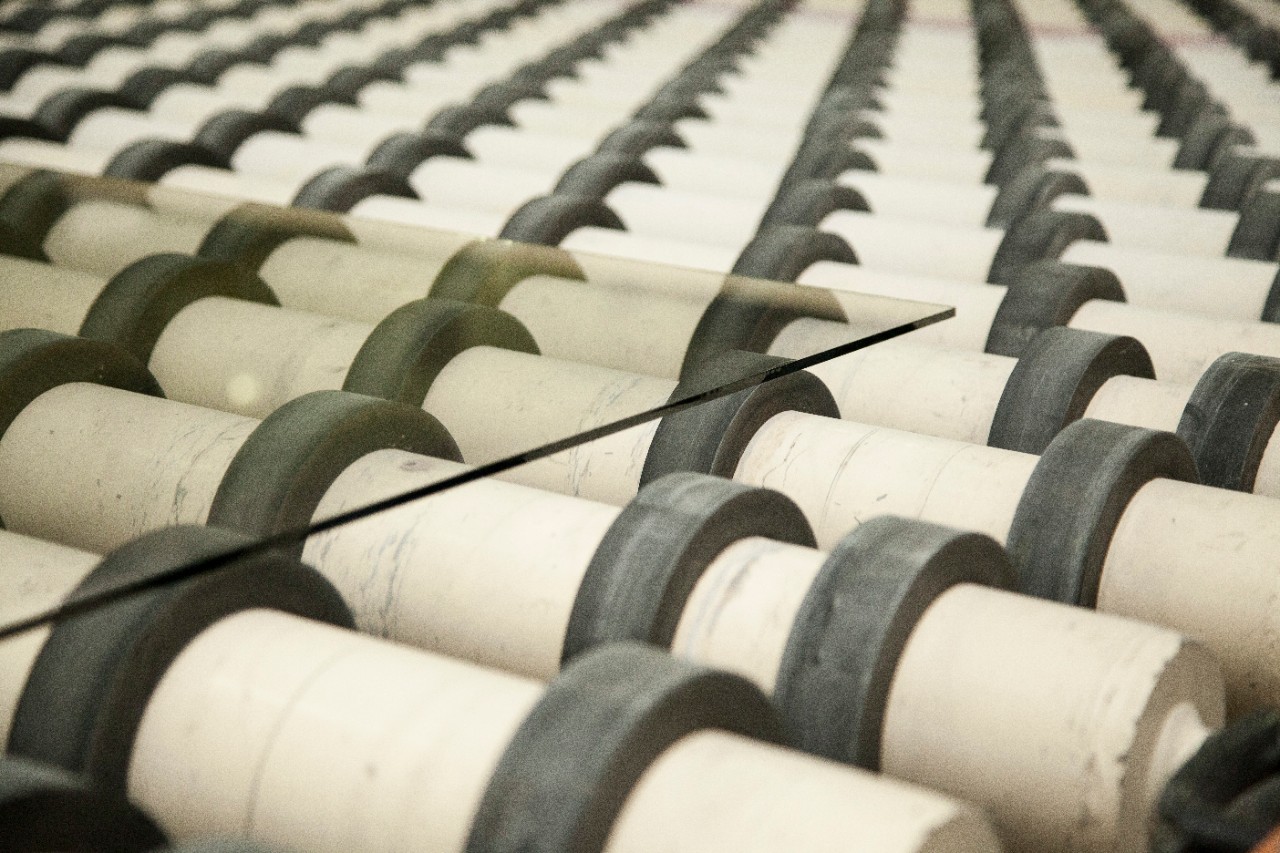Roller wave

An optical phenomenon, generally noticed in reflection, caused by hot glass sagging between rollers in the horizontal toughening process. Also referred to as ‘banding’, ‘corrugation’ or ‘wiggle’.
During the production of toughened safety glass and heat-strengthened glass in an oscillating roller hearth furnace, the glass is heated close to its softening point. The heating occurs in a furnace section where the glass is continually transported back and forth on fused silica rollers. As the glass temperature increases, the glass becomes pliable and tends to sag slightly between the rollers during reversals at each end of the furnace.
The result is a reduction in surface flatness known as ‘roller wave’, a periodic wave running at right angles to the direction of travel, and is measured from the lowest peak to the highest trough of the waves. Roller wave is most easily identified, when viewing the glass by reflection of rectilinear images, from the outside of a building in which it is installed.
The ends of each piece of glass tend to sag to a greater degree due to the cantilever effect of the unsupported ends of glass at the leading and trailing edges, this sag is known as ‘edge dip’.

Find out our easy-to-use, advanced software for glass and glazing specification.

Access a wealth of technical notes to enhance your knowledge about glass!

Guardian Glass Training Center
Learn the glass fundamentals in a fun and interactive way, at your own pace!